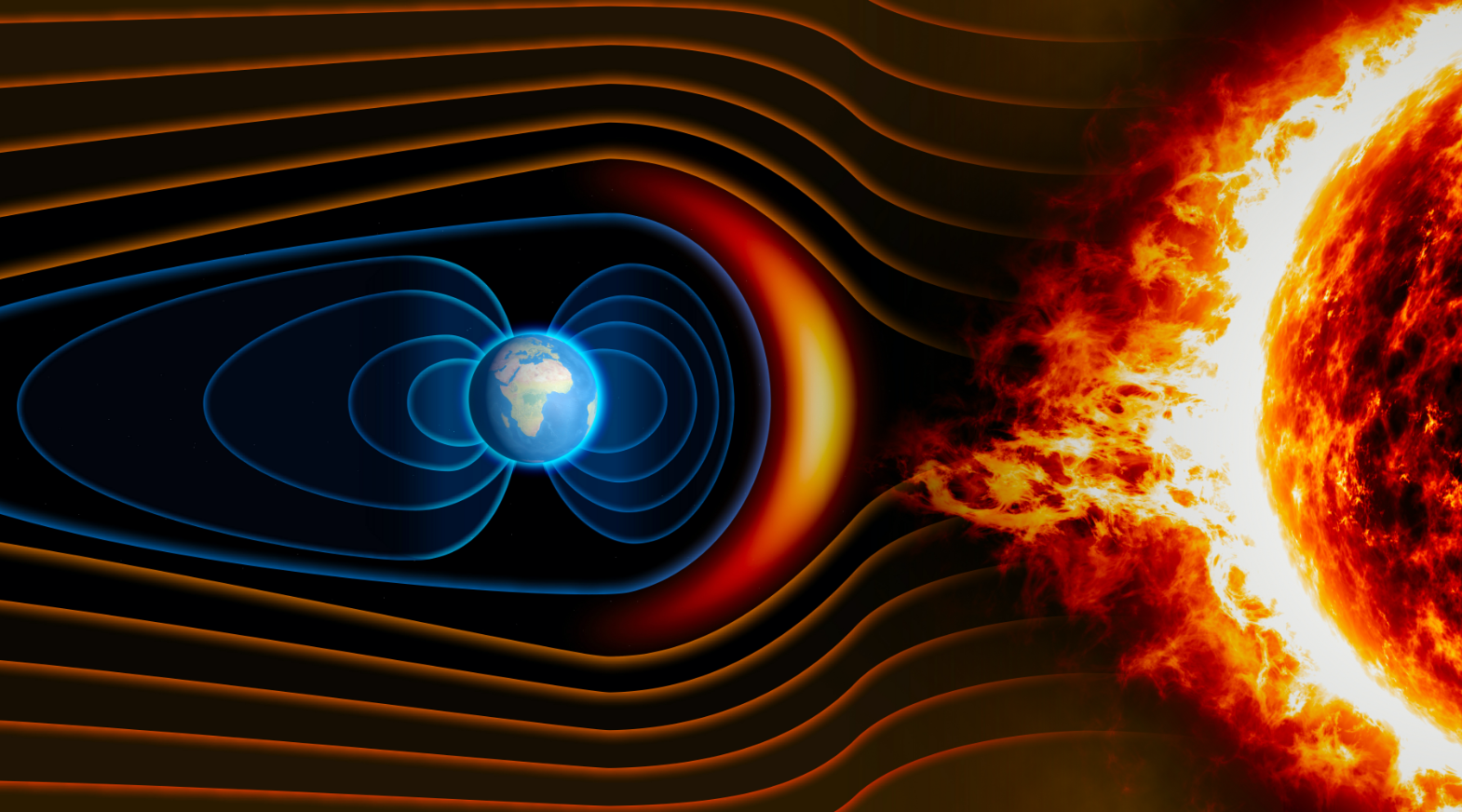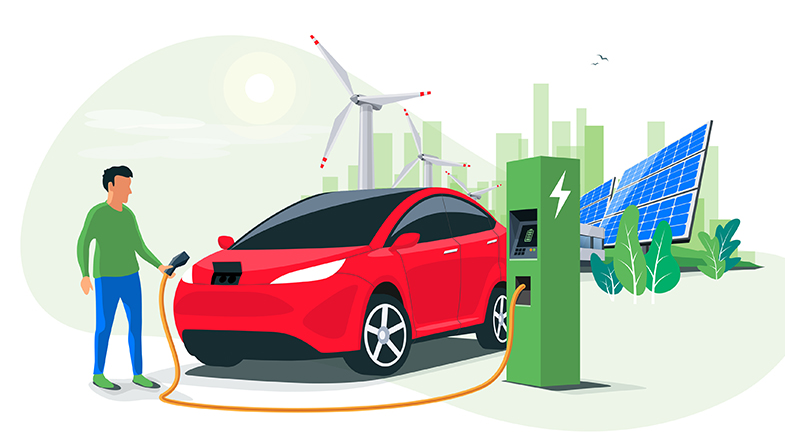India needs a national fusion energy mission: IPR Director Dinesh Aswal
-
- from Shaastra :: vol 04 issue 05 :: Jun 2025

IPR Director Dinesh Aswal outlines an Indian roadmap for commercial nuclear fusion power.
In mid-February, scientists in southern France wrestled a searing blob of plasma — hotter than the Sun — into stability for 1,337 seconds inside a doughnut-shaped machine, surpassing a 1,066-second record set by a Chinese machine weeks earlier. Both feats mark milestones in the 70-year global quest to harness nuclear fusion, the energy that powers the Sun. Over 400 nuclear reactors worldwide, including 24 in India, generate electricity using nuclear fission, or the splitting of atomic nuclei. However, fusion energy, created when hydrogen nuclei merge to form helium, remains commercially elusive. Fusion reactors must sustain stable plasma long enough to extract energy, but face major hurdles: achieving temperatures over 100 million°C, trapping plasma with intense magnetic fields, maintaining its inherently unstable state, and ensuring plasma-touching components survive without failing or contaminating the plasma.
India is a partner in the International Thermonuclear Experimental Reactor (ITER) in France, aimed at proving fusion can deliver more energy than it consumes, which is expected to be demonstrated in the 2030s. India has also built its own doughnut-shaped machines – called tokamaks – named ADITYA in 1989 and Steady State Superconducting Tokamak-1 (SST-1) in the early 2000s at the government-funded Institute for Plasma Research (IPR), Gandhinagar, to study plasma behaviour and fusion-related technologies. These machines have sustained plasma for a few hundred milliseconds.
Now, in a paper set for publication in Current Science, a journal of the Indian Academy of Sciences, IPR physicists Daniel Raju, I. Bandyopadhyay, and Dinesh Aswal have proposed a roadmap for India's transition from experimental fusion to commercial power. They have outlined three key initiatives: a mid-sized machine called SST-Bharat, a fusion-fission hybrid reactor, and a DEMO reactor targeting 250 MWe. In an interview to Shaastra, Aswal, currently Director of the IPR and head of the Health, Safety and Environment Group at the Bhabha Atomic Research Centre, discusses why the roadmap is urgent, the challenges ahead, and India's place in the global fusion race. Excerpts:
Fusion has long promised clean, abundant energy, but progress has been slow. What are the biggest challenges that have hindered the world's and India's advances in this area? Are they engineering or institutional challenges?
Fusion is like trying to trap a star inside a bottle: mind-boggling and immensely difficult. We have to recreate the Sun's conditions: incredibly high temperatures, intense pressures, and plasma – a hot soup of charged particles – held steady by powerful magnetic fields. The biggest challenges have been engineering: We need materials that endure continuous bombardment by high-energy neutrons, magnets that sustain massive currents without overheating, and systems to control unstable plasma for long durations. These are no small feats.
But institutional challenges also matter. Fusion demands patient, long-term commitment: decades of steady funding, collaboration across ministries, and a shared national vision. Countries like China, France, and South Korea have advanced because they combined scientific ambition with consistent government and industrial support. That is the model India now needs to follow with urgency.
Sustained plasma durations in Aditya and SST-1 have been much shorter than the durations achieved in China and France. In what way have Aditya and SST-1 helped prepare India for fusion power generation? What specific lessons has India learned about magnetic confinement stability, and how might these inform the design of SST-Bharat?
It is true that India's ADITYA-Upgraded and SST-1 tokamaks have achieved plasma durations of only a few hundred milliseconds, compared to the recent international records exceeding 1,000 seconds. But these machines weren't built to break records; they were designed to lay the foundation of India's fusion capabilities. ADITYA, our first tokamak, helped us study critical issues like plasma edge turbulence and runaway electrons – challenges every fusion reactor must manage. SST-1, with its superconducting magnets and long-pulse capability, let us explore new ways of sustaining plasma. These experiments gave Indian scientists hands-on experience in managing magnetic confinement, improving plasma stability, and understanding complex plasma-reactor wall interactions.
What technical gaps is SST-Bharat meant to bridge between India's current fusion devices and the future DEMO reactor, and what are its estimated cost and construction timeline?
SST-Bharat is the bridge between research and reality: India's bold step toward commercial fusion energy. While ADITYA-U and SST-1 focused on scientific exploration, SST-Bharat will seek to demonstrate real fusion power production in steady-state conditions. It will address key gaps such as producing net fusion energy, or more output than input, testing tritium breeding blankets needed for self-sustaining fuel cycles, heat extraction systems, and integrating digital twins for predictive control of complex systems. We are targeting about 170 MW, which could support a pilot hybrid plant generating up to 130 MWe of electricity. We estimate the cost will be `20,000 crore to `25,000 crore with a construction timeline of about a decade.
What is a fusion-fission hybrid reactor and how does it fit in India's fusion roadmap?
A fusion-fission hybrid reactor (FFHR) combines the strengths of both technologies. The fusion core produces high-energy neutrons, which then trigger fission reactions in a surrounding blanket made of thorium or uranium. This blanket is sub-critical, meaning it cannot sustain a chain reaction on its own, making it inherently safer than traditional fission reactors.
In India's roadmap, the FFHR serves as a practical intermediate step. It allows us to begin generating electricity sooner and helps us breed new fissile fuels like U-233 from thorium – critical for India's long-term energy independence. SST-Bharat will test such hybrid configurations. If successful, India's first DEMO reactor could also be built as a hybrid. Whether we shift to pure fusion will depend on the global pace of technological development – but hybrid reactors could remain a valuable part of India's energy mix well into the future.

How does India's domestic fusion programme complement – or diverge from – its contributions to the international fusion collaboration?
India's involvement in ITER has been transformative. As a full partner, we've built and delivered major components like the world's largest cryostat and contributed plasma heating systems, vacuum technologies, and diagnostics. ITER has sharpened our industrial and scientific edge.
Our domestic fusion programme complements this international effort by ensuring we retain and build upon that expertise at home. In simple terms, ITER is our global classroom, but SST-Bharat is our local workshop. The two are not in conflict, they're in synergy.
The roadmap you've proposed appears to call for speed. What level of government commitment – policy, financial, or institutional – would be required for SST-Bharat and DEMO?
Time is of the essence. To build SST-Bharat and reach a DEMO reactor by the 2060s, India needs a national fusion energy mission, with the same seriousness and structure as our three-stage nuclear fission programme. This means: sustained financial support across decades, not just short-term grants, policy-level leadership to align different government departments, and a fusion task force or authority to coordinate research, training, safety, and industrial engagement. Fusion is not a one-lab project; it requires a national mission. With early action, India can lead and ensure its energy future is both clean and secure.
'India needs a national fusion energy mission, with the same seriousness as our three-stage nuclear fission programme.'
One of fusion's persistent engineering challenges is developing materials that can withstand prolonged exposure to heat and neutron bombardment. How is India addressing these challenges, particularly those pertaining to plasma-facing components for future reactors?
The inside of a fusion reactor is a brutal environment. Plasma-facing components are bombarded by high-energy neutrons and intense heat, leading to swelling, cracking, and fatigue. India is tackling this by developing tungsten-based and reduced-activation steel alloys, exploring liquid metal surfaces like lithium that self-heal and improve plasma recycling, and using a 14-MeV neutron generator to test materials under fusion-like conditions. These efforts are guiding material choices for SST-Bharat and future systems, ensuring reactors are built for the harshest operating conditions.
Your paper calls for both financial commitment and industry participation. Can you elaborate on the public-private ecosystem needed to support your proposals? Are there roles Indian industry or start-ups could play even at this early stage?
Absolutely. Fusion is not a lab-scale science experiment; it is a mega-engineering challenge, demanding cryogenics, superconductors, precision manufacturing, and high-performance computing. Many Indian companies have contributed to ITER and SST-1. But going forward, they must shift from vendors to co-developers. We need public-private partnerships from the design phase itself to build critical systems for SST-Bharat. Start-ups can play game-changing roles in AI-driven plasma diagnostics and control, digital twins for predictive modelling, robotics for remote maintenance, and advanced materials. To support this, India must establish fusion technology consortia, offer innovation grants, and integrate fusion research into missions on AI, semiconductors, and clean tech. With the right ecosystem, fusion can drive industrial transformation just as ISRO did for space or BARC did for nuclear science.
See also:
ITER will demonstrate feasibility of nuclear fusion: P.I. John
Race for power
Have a
story idea?
Tell us.
Do you have a recent research paper or an idea for a science/technology-themed article that you'd like to tell us about?
GET IN TOUCH














